The Second Decade 1947-1956 : “If you could come and help us…”
Eighteen new MMM foundations were completed in the Second Decade. Work was expanded where it began in Nigeria and Ireland and new work was undertaken in Tanganyika, Angola, the United States and Italy.
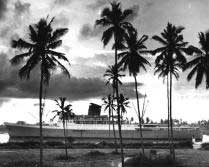 Everywhere the beginnings were humble and achievements were often accomplished by trial and error.
Everywhere the beginnings were humble and achievements were often accomplished by trial and error.
The village of Tlawi is located 3°55’S and 35°29’E, at an altitude of 1,920 meters above sea level. It is at the top of the eastern section of the Great Rift Wall, which divides in two as it passes through Tanzania. It was to this isolated and remote village that the MMM pioneers headed to make our first foundation in East Africa in 1947. It was said that if you make a friend in Tlawi, you have a friend for life!
The pioneers, Sister Helena Mulcahy, Sister Christina Hanly and Sister M. Kieran Saunders, went first to Galapo Mission to study Ki-Swahili, before opening the dispensary at Tlawi.
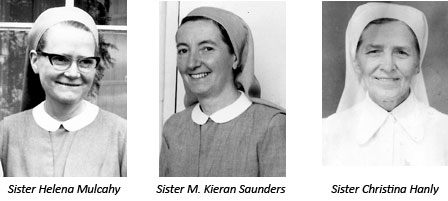
Monsignor P. Winters, a Pallotine missionary from Ireland, was responsible for running the Prefecture Apostolic of Mbulu, which had been established on 13 March 1943. Once the dispensary at Tlawi was functioning, he asked for more MMMs to take over a small church dispensary at nDareda, about fifty miles further down the Rift Valley, on a ledge of the escarpment. They arrived early in 1948 and before long nDareda was on its way to becoming a fully functioning hospital with 177 beds.
In the same year, an extension was added to the novitiate in Drogheda. In Nigeria, the work to bring Hansen’s disease (leprosy) under control was extended from Ogoja to a new foundation at Obudu, some forty miles to the east.
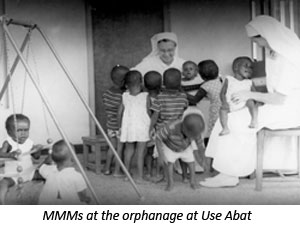 In 1949, half way between Anua and Ikot Ekpene, another foundation was made at Use Abat. Dedicated to Saint Thérèse, this was a children’s hospital and maternity unit.
In 1949, half way between Anua and Ikot Ekpene, another foundation was made at Use Abat. Dedicated to Saint Thérèse, this was a children’s hospital and maternity unit.
Also in 1949, in Ireland, a foundation was made in the town of Clonmel, at the foot of the Comeragh Mountains. A nursing home was established and a house started where postulants could receive their initial formation before entering the novitiate at Drogheda.
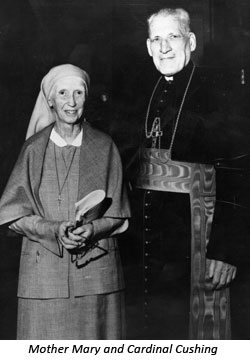 A major new challenge to MMM came in 1950, with the invitation by Archbishop (later Cardinal) Cushing of Boston to make the first MMM foundation in the United States.
A major new challenge to MMM came in 1950, with the invitation by Archbishop (later Cardinal) Cushing of Boston to make the first MMM foundation in the United States.
That was also the year when MMM founded the hospital at Urua Akpan, Nigeria, some thirty miles west of our original foundation at Anua.
In 1951 we were blessed with the gift of a small seaside bungalow at Bettystown in County Meath, Ireland, just where the River Boyne enters the Irish Sea. It is a place of quiet, just four miles from our Motherhouse at Drogheda. It was in poor condition, but by the following year repairs were completed and it was ready for occupation. Later, more needy places in Tanganyika were making pressing calls for help. We opened a hospital at Kabanga, several hundred miles west of our missions at Tlawi and nDareda. Kabanga is close to Lake Tanganyika, not far from the western border with Burundi.
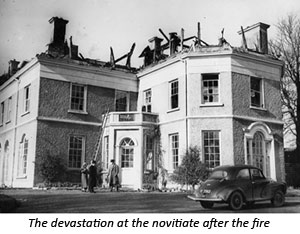 By 1952, with the novitiate extension fully occupied, normal living accommodation for the MMM Community in Drogheda seemed to be in sight for the first time since our foundation in 1937. In 1952, Shrove Tuesday fell on 13 February. As the Sisters left the chapel following Evening Prayer, shouts from passers-by alerted them to the smoke and flames coming from the top of the three-storey novitiate building. It was a bitterly cold evening, but luckily the stiff breeze was blowing the flames away from the nearby hospital. The upper floor and roof were engulfed in flames, which burned fiercely for four hours until four units of the Fire Brigade and an Army fire-fighting truck succeeded in extinguishing the blaze. Mercifully, nobody was trapped in the building, but when the fire had eventually been put out, the immediate problem was that 136 Sisters were now homeless.
By 1952, with the novitiate extension fully occupied, normal living accommodation for the MMM Community in Drogheda seemed to be in sight for the first time since our foundation in 1937. In 1952, Shrove Tuesday fell on 13 February. As the Sisters left the chapel following Evening Prayer, shouts from passers-by alerted them to the smoke and flames coming from the top of the three-storey novitiate building. It was a bitterly cold evening, but luckily the stiff breeze was blowing the flames away from the nearby hospital. The upper floor and roof were engulfed in flames, which burned fiercely for four hours until four units of the Fire Brigade and an Army fire-fighting truck succeeded in extinguishing the blaze. Mercifully, nobody was trapped in the building, but when the fire had eventually been put out, the immediate problem was that 136 Sisters were now homeless.
This disaster at our Motherhouse in Ireland was a terrible blow to Mother Mary, but did not deflect her attention from her missionary goals.

Only two days before the fire in Drogheda, the first ward of Saint Mary’s Hospital at Urua Akpan in Nigeria, was blessed and opened. For two years prior to that, an MMM nurse was living in a small mud house at Urua Akpan, running a very busy outpatient clinic. Saint Mary’s Hospital was destined to become an important health care facility, and one with a most interesting history.
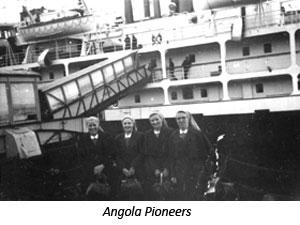 In 1952 we were invited to open our first mission in Angola, then colonized by Portugal. Three Sisters arrived the following year. Two more foundations in Europe were made in 1952. One was in Ireland, in Waterford, where MMMs took over the running of a maternity hospital at Airmount. The other was in Italy in Naples, where we were invited to staff the Clinica Mediterranea.
In 1952 we were invited to open our first mission in Angola, then colonized by Portugal. Three Sisters arrived the following year. Two more foundations in Europe were made in 1952. One was in Ireland, in Waterford, where MMMs took over the running of a maternity hospital at Airmount. The other was in Italy in Naples, where we were invited to staff the Clinica Mediterranea.
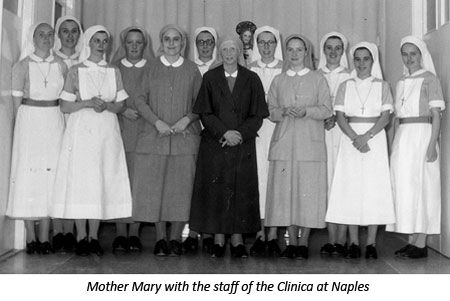
By 1953 in Nigeria, the work of bringing the widespread disease of Hansen’s disease (leprosy) under control continued to expand, with an important new foundation at Ikom, south of Ogoja.
In 1954, there were three new foundations. In Nigeria, south of Anua, a small community of Sisters settled at Akpa Utong to provide services in a maternity unit and children’s hospital. In Ireland, we were invited to 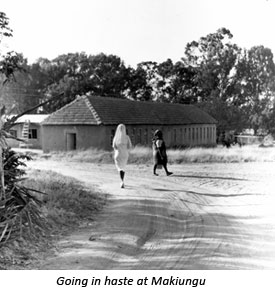 Killybegs in County Donegal. This was another home where Sisters on leave from overseas could rest and recuperate, while we cared for the elderly and lovable Bishop McGinley, who had retired from his work in Carmel-by-the-Sea in California.
Killybegs in County Donegal. This was another home where Sisters on leave from overseas could rest and recuperate, while we cared for the elderly and lovable Bishop McGinley, who had retired from his work in Carmel-by-the-Sea in California.
In Tanganyika, Monsignor Winters was concerned for the very poor and neglected people around the village of Makiungu, about twenty miles from the town of Singida. He had dreamed of having a hospital there. MMM could help, he felt, but we were becoming overstretched. We could only do so by withdrawing the Sisters from Tlawi. That was done in 1954, amidst great sadness at leaving Tlawi. We were later able to return there and run the dispensary as an outstation from nDareda.
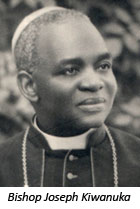 The year 1955 brought another invitation that was to have great significance for MMM. Sister Gemma Breslin feels somewhat responsible for this! One day in 1950, she was working at Kimmage Manor in Dublin, the great mission-sending house of the Spiritan (Holy Ghost) Fathers. There she met Bishop Joseph Kiwanuka, the first African to be appointed a bishop. Among the projects that brought him to Ireland was a search for Sisters to staff a hospital in his diocese at Masaka in Uganda. He told Sister Gemma his sad story: how he had asked so many different congregations to come, but they had all refused. Next day he would be going to Clonmel to put his request to Mother Mary. Sister Gemma promised him she would pray that Mother Mary would agree. As he set off, little did Sister Gemma realize that a few years later she would be among the pioneers who would make Bishop Kiwanuka’s dream come true.
The year 1955 brought another invitation that was to have great significance for MMM. Sister Gemma Breslin feels somewhat responsible for this! One day in 1950, she was working at Kimmage Manor in Dublin, the great mission-sending house of the Spiritan (Holy Ghost) Fathers. There she met Bishop Joseph Kiwanuka, the first African to be appointed a bishop. Among the projects that brought him to Ireland was a search for Sisters to staff a hospital in his diocese at Masaka in Uganda. He told Sister Gemma his sad story: how he had asked so many different congregations to come, but they had all refused. Next day he would be going to Clonmel to put his request to Mother Mary. Sister Gemma promised him she would pray that Mother Mary would agree. As he set off, little did Sister Gemma realize that a few years later she would be among the pioneers who would make Bishop Kiwanuka’s dream come true.
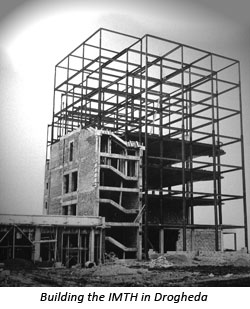 When 1956 arrived, MMMs brought the last year of their Second Decade to a close just as it had begun – with another foundation in Tanganyika. This time it was at Chala, midway between the towns of Tabora and Sumbawanga, and was part the Diocese of Karema.
When 1956 arrived, MMMs brought the last year of their Second Decade to a close just as it had begun – with another foundation in Tanganyika. This time it was at Chala, midway between the towns of Tabora and Sumbawanga, and was part the Diocese of Karema.
Meanwhile back in Ireland, the first three floors of the new International Missionary Training Hospital at Drogheda were ready for occupation. These were blessed and opened on 3 October, which at that time was the feast of Saint Thérèse of Lisieux, Co-Patron of the Missions, to whom Mother Mary Martin had a great devotion. Work continued on the four remaining stories of the new hospital, which would be opened in September 1957.
The First Decade The Third Decade
< MILESTONES POSTS
